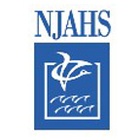Most Nisei will remember Jack Matsuoka’s drawings from the seventies published in Hokubei Mainichi, along with his series, Sensei, and his book about relocation camp life entitled Camp II, Block 211 (Japan Publications, Inc., 1974). Matsuoka was born in Watsonville in 1925 and later attended a single semester at Cleveland School of Fine Arts in Ohio before being drafted into the army. He was just a teen when he drew the cartoons of Camp II, Block 211, a humorous and poignant depiction of life in Poston relocation camp. Ken Kaji visited Mr. Matsuoka, now retired, at his home in Fuji Towers in San Jose, California.
K. Kaji: “How did you develop an interest in becoming a cartoonist?”
J. Matsuoka: “I began drawing at an early age. My father was in the laundry business in Watsonville before the war. My mother worked as a midwife. They knew I had an interest and talent for drawing, but always encouraged me to become a doctor or some other kind of professional as they felt I would have difficulty making a living as an artist.
In camp, at Poston, I skipped my junior year and graduated in the class of ’43. Curiously enough, one of my previous classmates was [cartoonist] Pete Hironaka. I knew him personally, but all during that time I did not know of his interest in drawing. I began drawing for the camp newspaper. At that time I had no formal art education. I could speak Japanese better than the average Nisei, and this permitted me to attend the military language school at Monterey. I then was assigned to a Military Intelligence Corps in Japan. My job was to weed out subversives. I lived in Japan from 1945 to 1961.”
KK: “What did you do in Japan?”
JM: “After getting out of the service I went to Hartnell College, then as an exchange student under the GI Bill transferred to Keio and Sophia Universities. I later married and lived first as a student and then worked for the Japan Times. Due to lapses of receiving my $75 government checks I did a cartoon book on GI’s studying in Japan called Rice Paddy Daddy for the Tuttle Co. I showed the work to the president of their company, and he liked it a lot and gave me $360 right away, which was a lot in those days. I knew then that someday I could make it [professionally] as a cartoonist. At that time cartooning was very hot in Japan. I joined the Manga Kyokai and continued to struggle. I was the only bi-lingual cartoonist, and so I found easy access to finding work drawing sports cartoons for the American military in Japan. In the early sixties I returned to the states and began working of Maruben Iida Co., a trading house that dealt with import-export business. I lived in San Francisco and began drawing cartoons, on the side, for the UC Bears and the Berkeley Gazette. Finally, in 1969, I went on my own as a freelance cartoonist.
KK: “How did you earn your living as a cartoonist?”
JM: “With cartooning as my whole source of income it was difficult, but I managed to get by. I did quite a lot of exhibits throughout northern California, a part of the public relations work for the Bank of Northern California. I gave demonstrations and exhibits in connection with many Buddhist Obon celebrations throughout the state. I was the Editorial Cartoonist for Pacifica Tribune, a weekly publication. [I worked for] San Francisco Examiner, San Mateo Times, San Jose Mercury News and finally as a regular cartoonist for Hokubei Mainichi. I drew mostly sports cartoons for the Times. But even then it was difficult to have my work accepted, because I was a non-union artist and they had their own unionized art staff. It was only with the insistence of the publicity director of San Jose State that I was able to get my cartoons published.”
KK: “Do you know of any other Nikkei cartoonists beside Hiranoka?”
JM: “I believe there was a Kawamoto who worked for Disney. There was the cartoonist who drew Deems in Topaz. I do not know of any sport of political cartoonist other than Pete.”
KK: “Having been in the military and in camp and a long-time Buddhist, I crack up laughing at all your cartoons. They all seem to get right to the heart of the subject and spare no one when revealing the humor ‘in the moment.’ How do you do this?”
JM: “I just do it, and express it easily through drawing.”
KK: “What work of yours would you most like to be remembered?”
JM: “Camp II, Block 211 because I want the general American public to know about what we had to go through. I have donated ten original drawings to the Japanese historical museum in Los Angeles and other original work was given to San Francisco and Cornell universities. I think I am the only Nisei cartoonist to be awarded a membership to the National Cartoonist Association. I was also recognized in Asian Awareness: the Movement and the Moment, a University of California Los Angeles Asian American Studies Center publication (1997), for my political cartoon supporting Committee Against Nihonmachi Evictions in San Francisco during the seventies.”
* This article was originally published in Vol. IX, Number 2, Spring 2002 issue of Nikkei Heritage, a journal of the National Japanese American Historical Society.
© 2002 National Japanese American Historical Society



